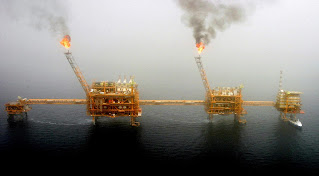Efficient investment in wastewater and other sanitation
services is vital to achieving public health benefits, improving the
environment, and enhancing life quality. Safe water, sanitation and hygiene
(WASH) programs are important to prevent disease and protect human health
during outbreaks of infectious disease, including the ongoing COVID-19
pandemic.
Over the past two decades, Bolivia has made strong strides
in expanding access to water and sanitation facilities. Yet, even though access
to piped water and wastewater collection has increased, the quality of those
services is still not optimal, particularly for the poorer population. Service
interruptions and blockages are normal. Also, water quality and wastewater
service delivery remains a challenge, particularly in areas facing water
scarcity.
Bolivia reports that only 27% of wastewater is treated (WSP,
2016). In cities with over 10,000 inhabitants, wastewater treatment is just
39%. Wastewater treatment facilities need to be upgraded and expanded in cities
like El Alto, Oruro, Cochabamba and Tarija; while La Paz, with about 800,000
inhabitants, has no treatment facilities. Instead, untreated wastewater is
dumped into the Choqueyapu and La Paz Rivers, further rising water
contamination and endangering human health.
Urban ization has greatly increased domestic and industrial
water demand in Bolivia, and untreated wastewater is often reused for
water-scarce irrigation. Polluted water downstream of the La Paz River is
unregulated for irrigation. Yet due to a lack of oversight, its unregulated
usage presents potential risks to the health of urban consumers of agricultural
products as well as farmers and their families' health.
In order to tackle these problems, the Ministry of
Environment and Water (Ministerio de Medio Ambiente y Agua-MMAyA) began in 2017
to establish a National Strategy for Wastewater Management and Reuse aimed at
addressing both water contamination and public health concerns caused by low
rates of wastewater treatment and excessive use in agriculture and at
encouraging reuse within a broader framework. The Global Water Protection &
Sanitation Partnership (GWSP), a multi-donor trust fund housed in the World
Bank's Water Global Program, provided technical assistance to formulate the
plan.
To achieve these goals, particularly in La Paz, a wastewater
treatment plant is desperately required as well as a network of trunk sewers
and emissaries to transport wastewater to the treatment plant itself.
But building a new facility is the beginning. Develop and
robustly execute service and maintenance plans to ensure the viability and
efficacy of the current La Paz wastewater management program.
Help must also include: I improving policy, structural,
regulatory and funding mechanisms for wastewater management; (ii) increasing
public awareness of the value and costs of wastewater treatment; (ii)
supporting the environmental regeneration of watercourses in the watersheds of
Choqueyapu and La Paz to minimize public health;
To close the sanitation gap in Bolivia, it must also go
beyond traditional wastewater collection and treatment approaches and explore
non-conventional sanitation structures, including off-sewage network approaches
and fecal sludge management.
Our expertise in promoting wastewater control, national and
global, also shows valuable lessons, including:
Selecting wastewater systems should be based on maximum
life-cycle costs (i.e. investment costs, operational and maintenance costs).
The facilities' positive social implications should be
considered across the cycle: employment created by the plant's construction,
operation, and maintenance; improvements in property prices following
improvement of the receiving water body; alternative water sources from reuse
for farmers; and improved health from better water quality.
The value of ensuring sufficient ability of utilities to
perform and sustain wastewater treatment. The need to ensure that utilities
produce adequate revenue to pay for operating and maintenance costs.
Bolivia's WSS field consists of many institutions. For
example, MMAyA, the Department of Drinking Water and Sanitation (Viceministerio
de Agua Potable y Saneamiento Basico-VAPSB) and the Department of Water
Supplies and Irrigation (Viceministerio de Recursos Hídricos y Riego);
are the sector authorities responsible for water and
wastewater policies, technical requirements and budgeting for sector
investments when these are priorities. In comparison, local councils are
responsible for delivering WSS services.
Municipalities may provide these services directly or
through agencies offering basic water and sewerage services (Entidades
Prestadoras de Servicios Basicos de Agua y Alcantarillado, EPSAS), which
usually join municipal or utility cooperatives in urban areas. Cross-sectoral
and multi-stakeholder cooperation is also crucial to Bolivia's wastewater
strategy's progress.
To accomplish this, national and local governments and water
providers, with funding from the World Bank and other development partners, are
working together to integrate circular economic concepts into the design of the
wastewater treatment plant in La Paz.
Wastewater can be a valuable resource if there are
appropriate policies, technology and financial opportunities. The World Bank
stands ready to assist Bolivia in-wastewater treatment and reuse coverage
levels to eventually minimize water pollution and achieve environmental
recovery, improve people's health, and contribute to building climate
resilience in urban agricultural areas.




Comments
Post a Comment